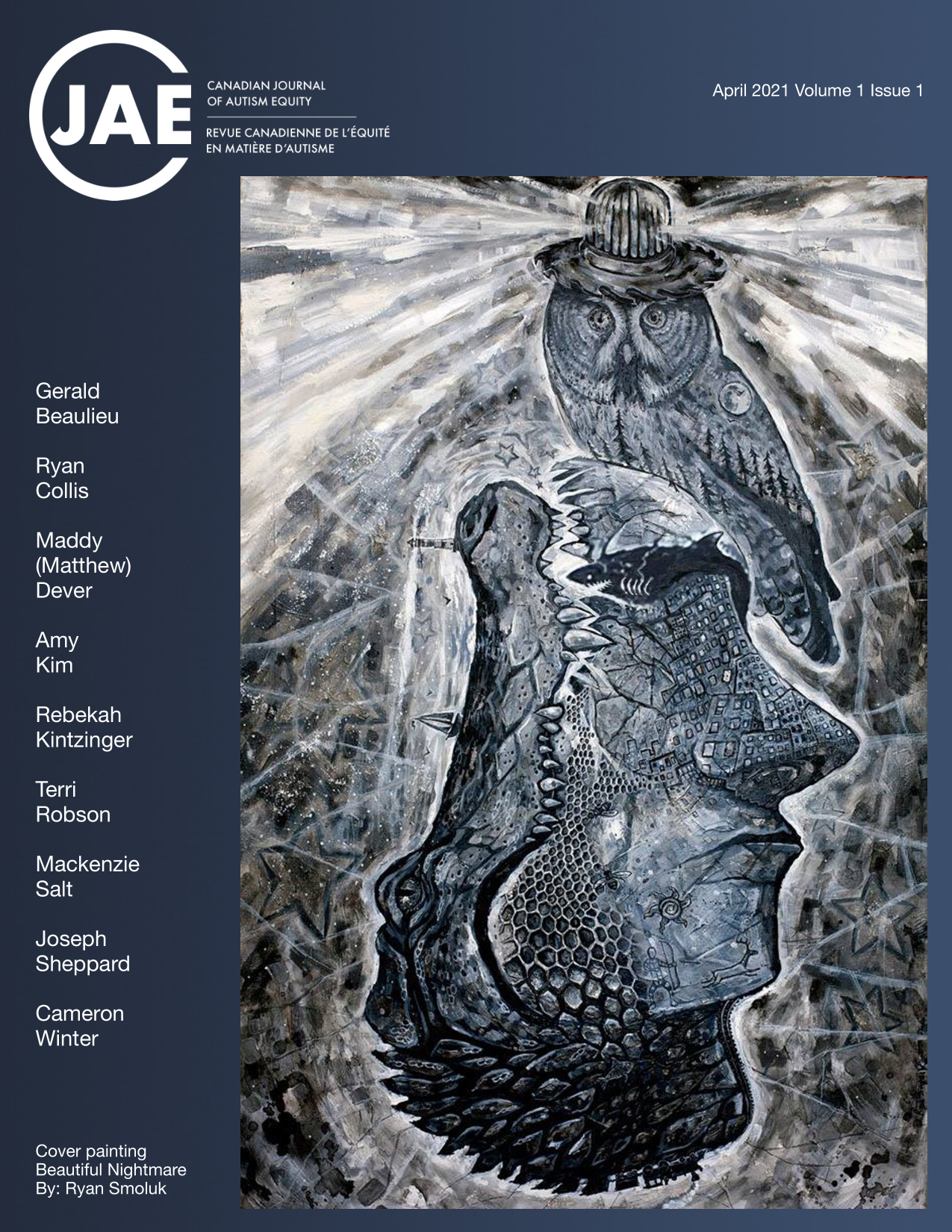Supporting Autistic Culture in Defining Autistic Identity
DOI:
https://doi.org/10.15173/cjae.v1i1.4983Keywords:
Autism, Culture, Disability, IdentityAbstract
Late diagnosed Autistic adults who are also practicing artists are very likely to have clues about their identities expressed in their work. This gives them the opportunity to reevaluate their meaning through a more accurate lens and proper context. It also challenges viewers and audiences to do the same and to confront misconceptions. These biases are likely to extend across all forms of cultural production. This leaves Autistic and disabled artists with a very small and unrecognized footprint in our current cultural landscape. This needs to be rectified by rejecting outmoded stereotypes and establishing committed programs of engagement with Autistic culture by our public institutions.
References
Hull, L., Petrides, K. V., Allison, C., Smith, P., Baron-Cohen, S., Lai, M. C., & Mandy, W. (2017). "Putting on My Best Normal": Social Camouflaging in Adults with Autism Spectrum Conditions. Journal of autism and developmental disorders, 47(8), 2519–2534. https://doi.org/10.1007/s10803-017-3166-5
Berry, A. (2017, December 21). Disability is the Poor Relation of Identity Politics. Disability Arts Online. https://disabilityarts.online/magazine/opinion/disability-poor-relation-identity-politics/
Downloads
Published
How to Cite
Issue
Section
License
Copyright (c) 2021 Gerald Beaulieu

This work is licensed under a Creative Commons Attribution-NonCommercial-ShareAlike 4.0 International License.
Authors retain copyright and grant the journal the right of first publication with the work simultaneously licensed under a Creative Commons Attribution License that allows others to share the work with an acknowledgement of the work's authorship and initial publication in this journal.
Authors are able to enter into separate, additional contractual arrangements for the non-exclusive distribution of the journal's published version of the work (e.g., post it to an institutional repository or publish it in a book), with an acknowledgement of its initial publication in this journal.
CJAE accepts articles that have not been published in any other journals/proceedings, unless copyright permission is assured, and have not been submitted for consideration to any other journals/proceedings at the time of submitting to the Canadian Journal of Autism Equity for consideration. While a paper is under consideration by CJAE, you agree not to submit the work to other journals/proceedings until review by CJAE is completed and a decision has been rendered.



